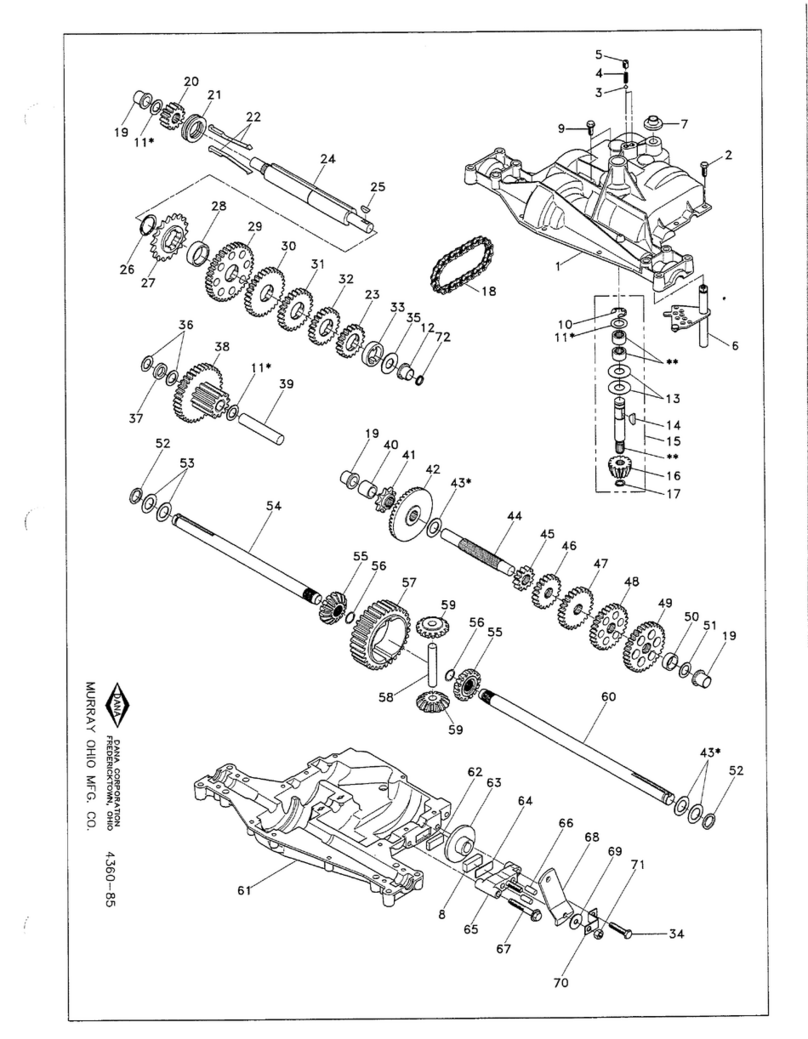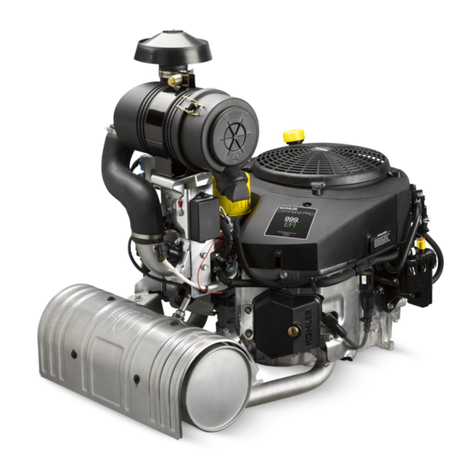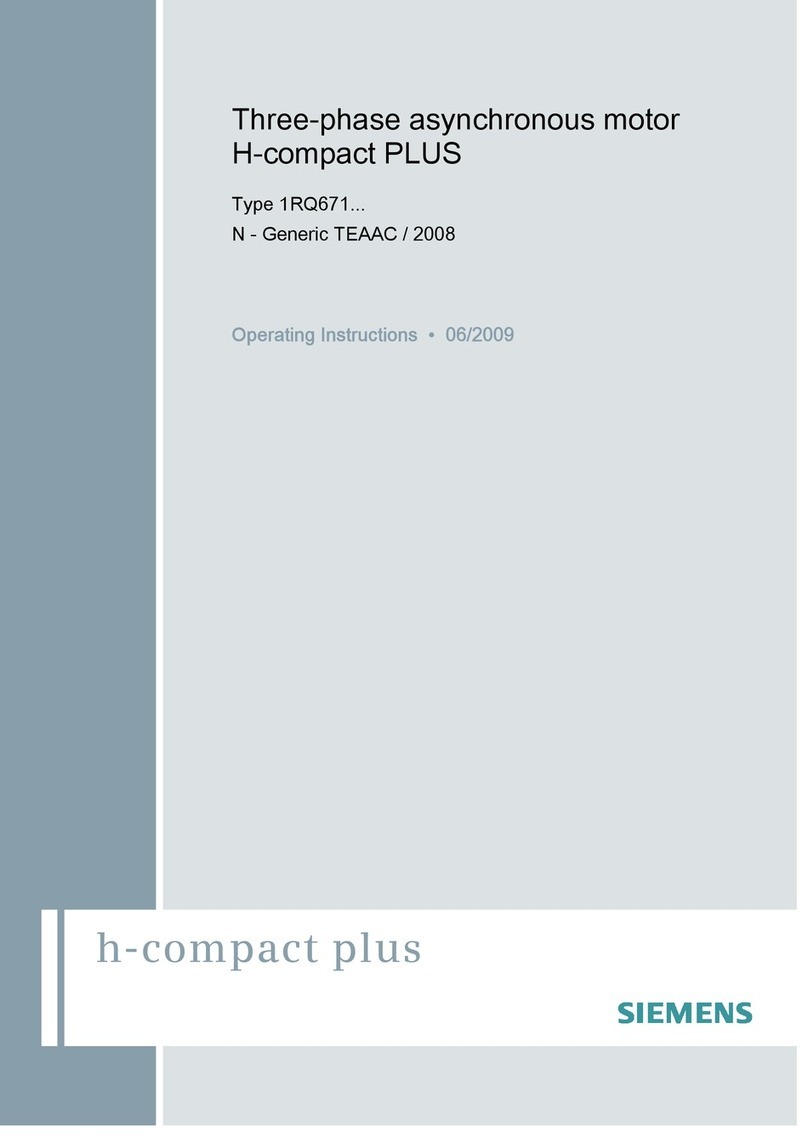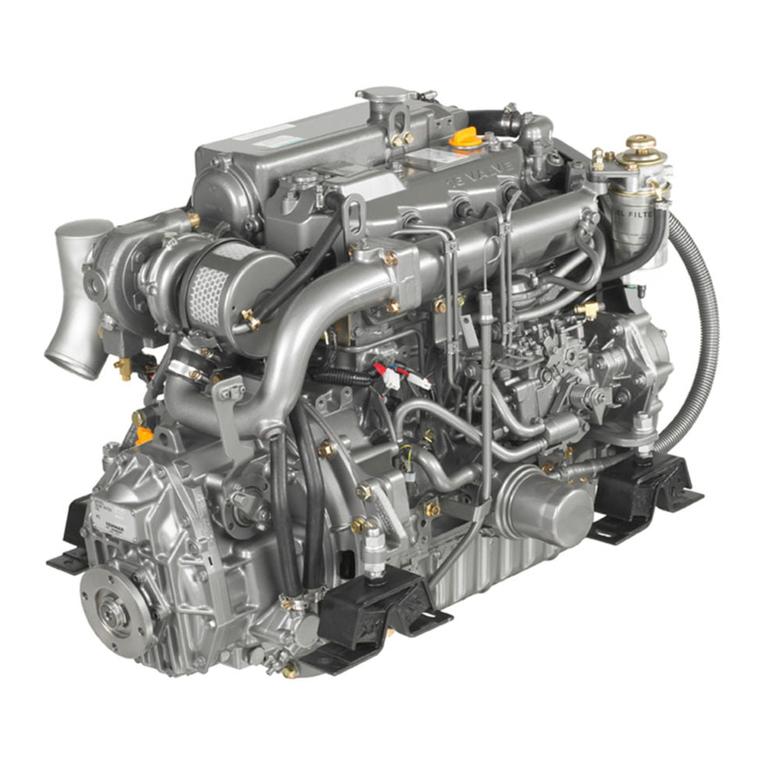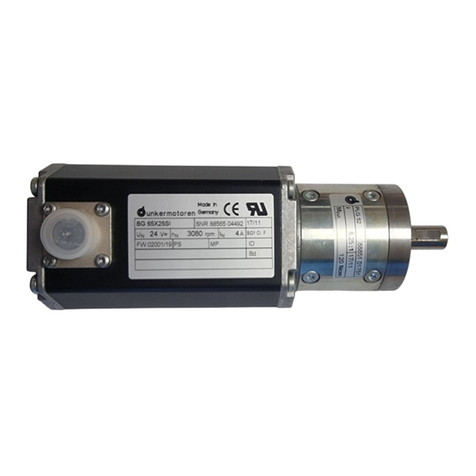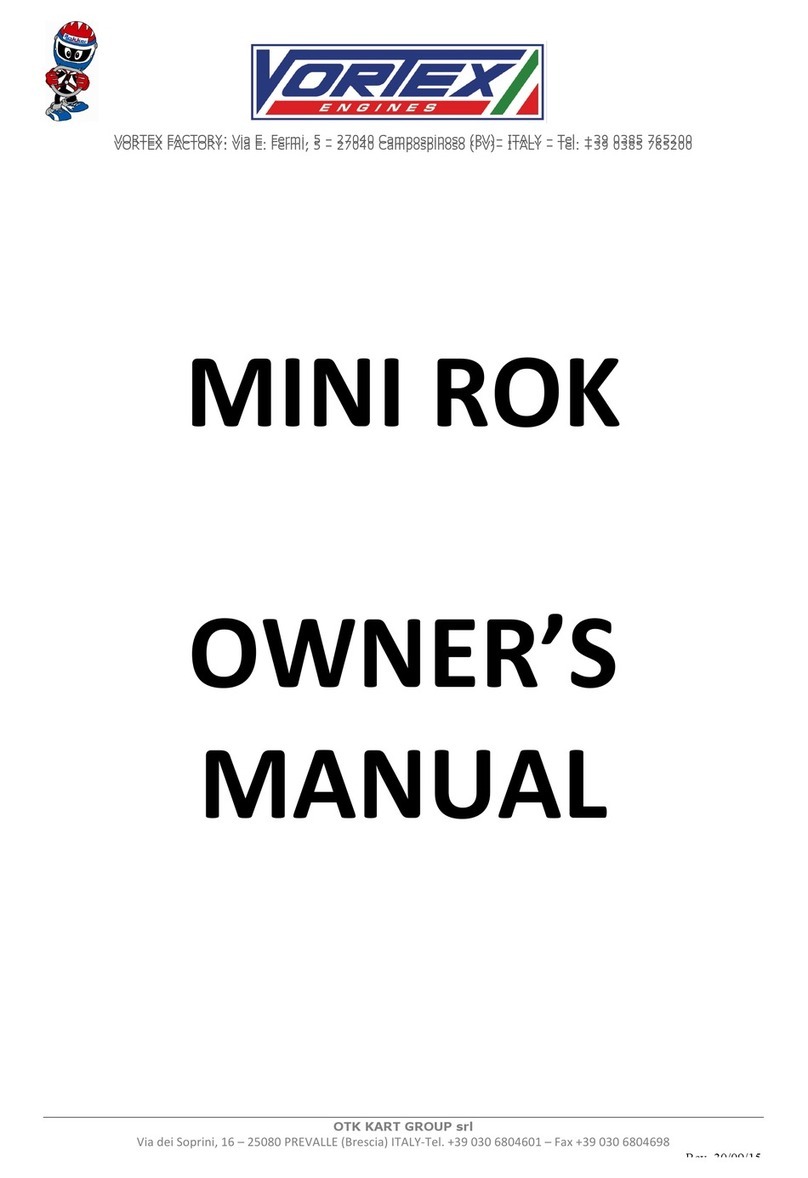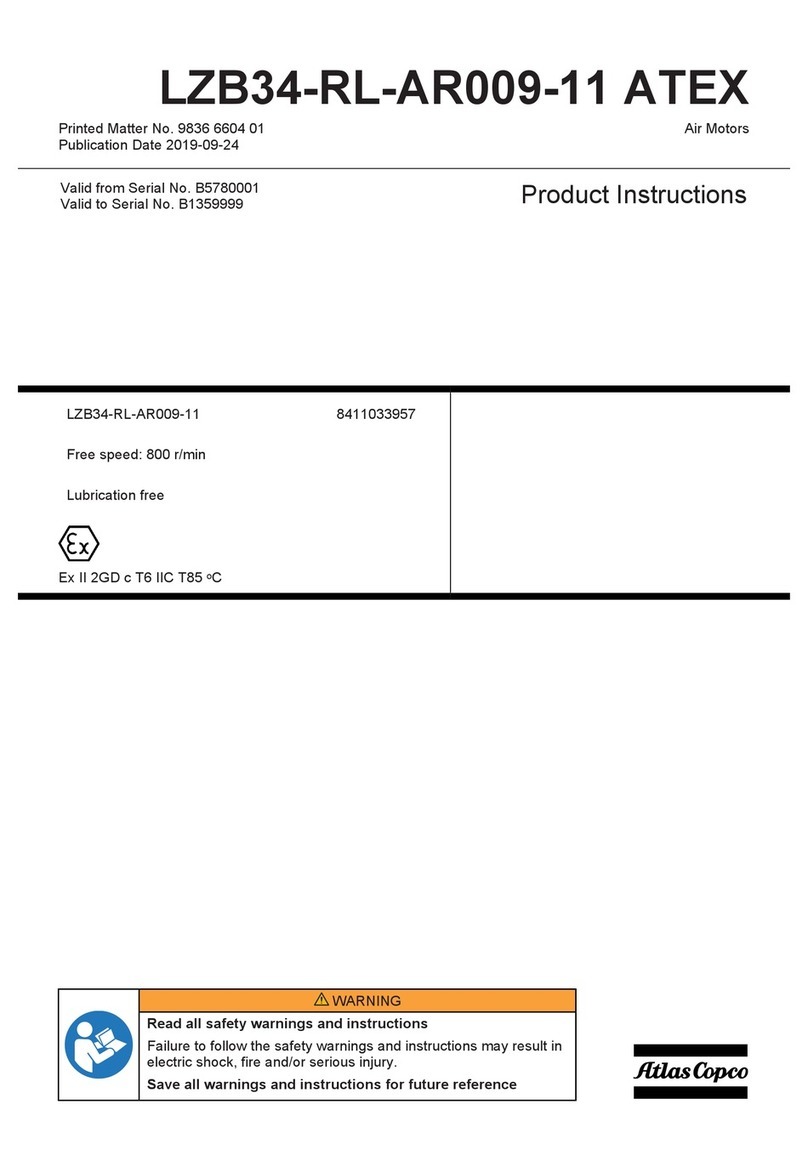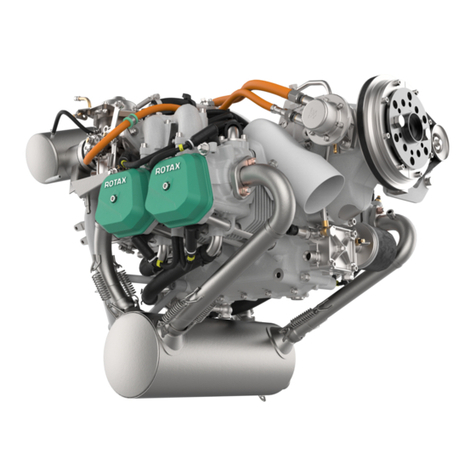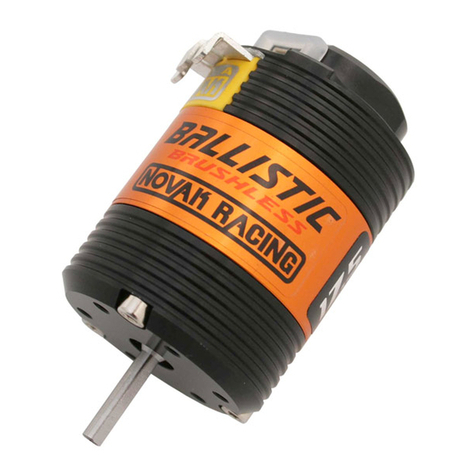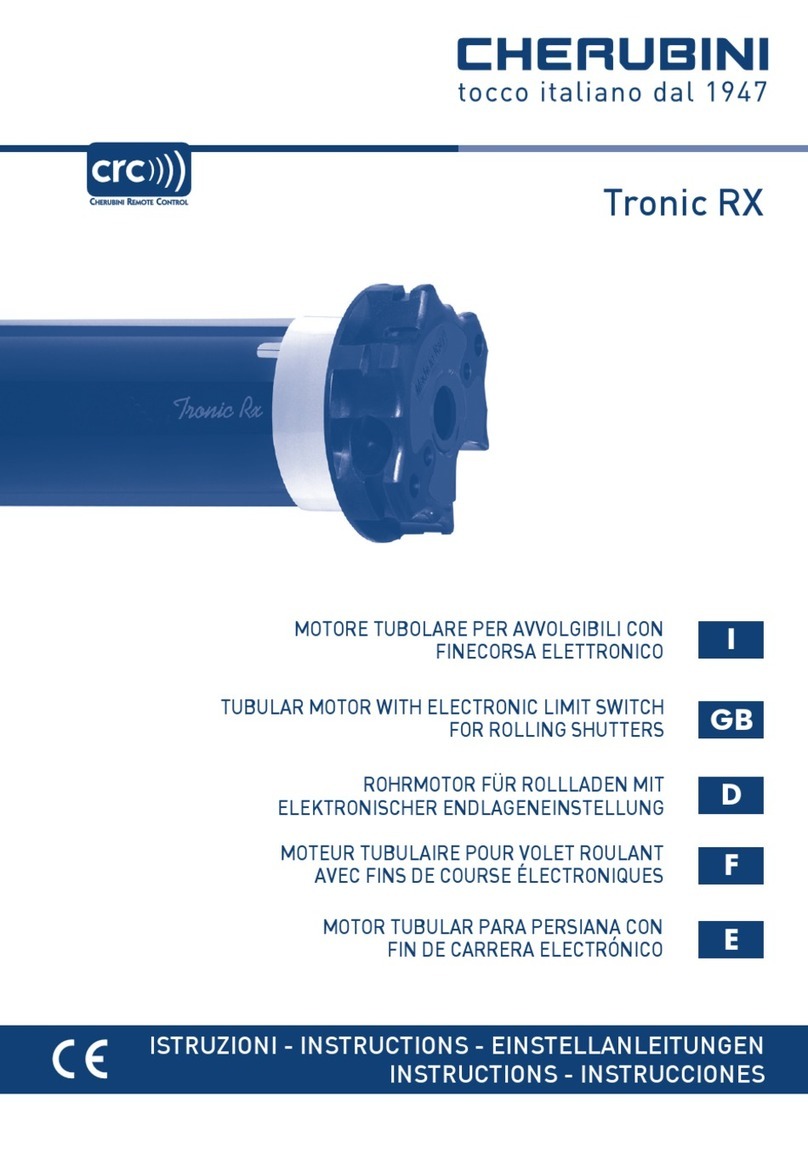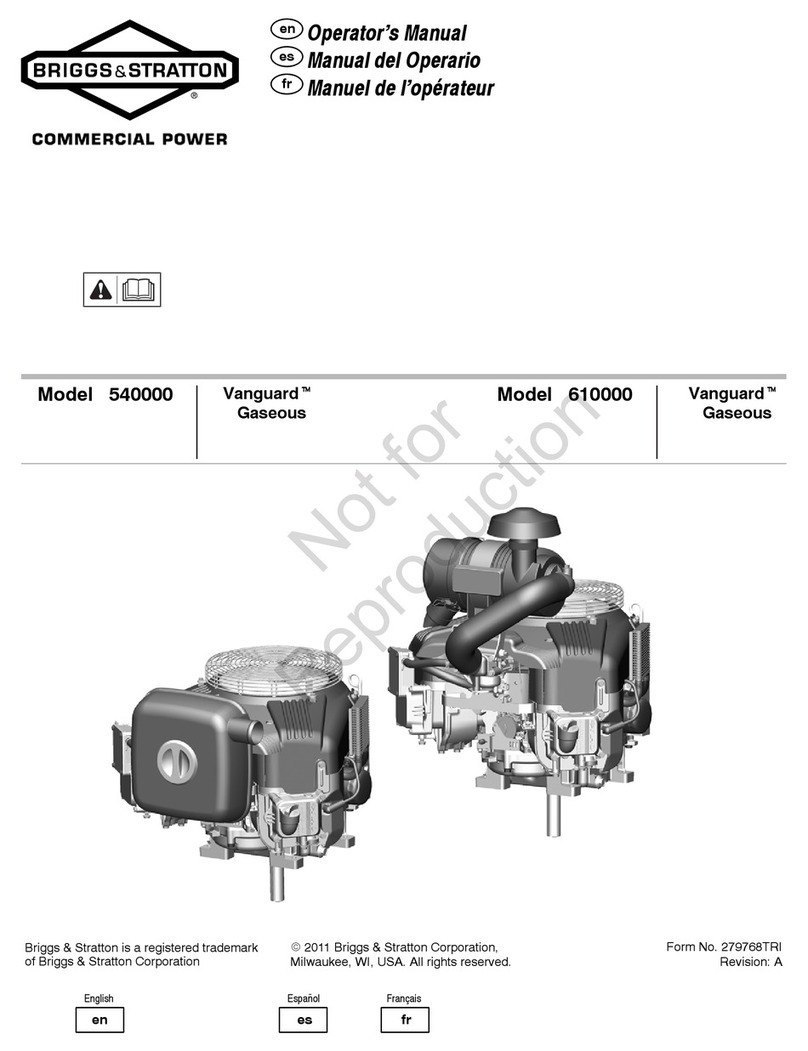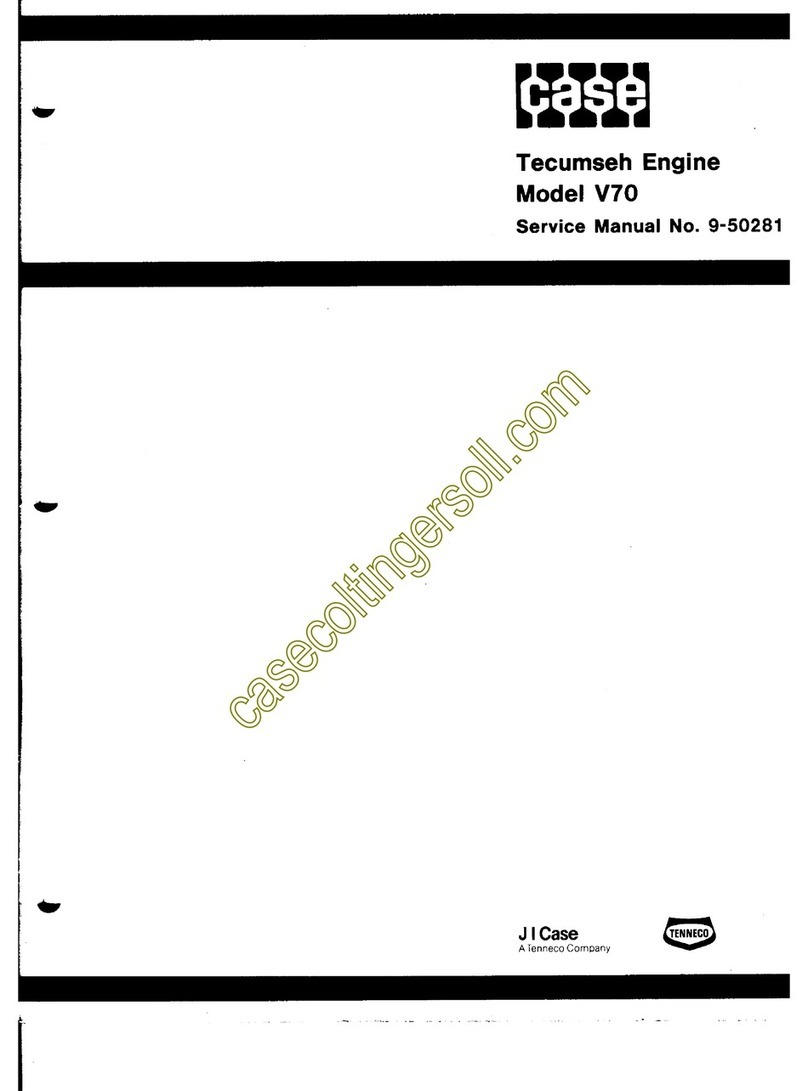Beta Marine Beta 10 User manual

CALIFORNIA – Proposition 65 Warning: Diesel engine exhaust and some of its constituents are known
to the state of California to cause cancer, birth defects and other reproductive harm.
Operator’s
Maintenance
Manual
Operator’s
Maintenance
Manual
Heat Exchanger
& Keel Cooled
Small Diesel Engine Range: Beta 10,
Beta 14, Beta 16, Beta 20 & Beta 25
Heat Exchanger
& Keel Cooled
Small Diesel Engine Range: Beta 10,
Beta 14, Beta 16, Beta 20 & Beta 25

Engine Details IMPORTANT
- Please fill in details at moment of purchase - it really will
help you! (and it will really help us specify the correct spare parts for you).
Engine Type: Power: bhp Speed: rpm
BETA WOC NO: K
Gearbox Type:
Purchased From:
Invoice No.:
Date Commissioned:
Specification / Special Details:

1
My engine details (to be completed now) Inside front cover
Introduction
Engine identification 2
Initial receipt of the engine 2
Engine storage 2
Safety precautions 3
Technical specifications 4
Section 1: Installation guidelines
Engine mounting 5
Engine alignment - drives, flanges, flexible couplings 6
Exhausts and mounting exhausts 7 & 8
Fuel supply and "leak off" 9
Cooling - sea water inlet system 10
Cooling - keel cooling system 10 & 11
Calorifier connections (if fitted) 12
Electrical Installation 13
Section 2: Guidelines for operation of the engine
Important checks prior to initial use 14
Initial start-up and bleeding the fuel system 14
Starting and stopping 15 & 16
Section 3: Maintenance & Service guidelines
Maintenance schedule 17 & 18
Lubrication - checking and changing oil 19 & 20
Fuel system - fuel/water separator, fuel lift pump, fuel filter 21
Cooling - fresh water system, heat exchanger 22
Sea water pump, heat exchanger 24
Belt tensioning adjustment 25
Air filter inspection / replacement 25
Electrical maintenance 26
Laying up - winterising 26
Troubleshooting 28
Torque settings 39
Wiring diagrams and general arrangement drawings index 40
Exhaust Emission - Declaration of Conformity 71 & 72
Exhaust Emission - Durability 73
Fast Moving Parts Listing 76, 75 & 74
Maintenance record Inside back cover
Contents

Engine Identification
NOTE: In all communications with the
distributor or Beta Marine, the W.O.C.
and engine number must be quoted.
Beta 10, Beta 14, Beta 16,
Beta 20 and Beta 25
The engine serial number is stamped above the fuel lift
pump on the starboard side of the engine, and is shown on
the rocker cover label.
Initial Receipt of the Engine
A full inspection of the engine must be made immediately
on delivery to confirm that there is no damage. If there is
any damage then write this clearly on the delivery note and
inform your dealer or Beta Marine within 24 hours. A
photograph would always help.
Engine Storage
The engine must be stored in a dry, frost free area and this is
best done in its packing case. If storage is to be more than
six months then the engine must be inhibited (contact your
dealer or Beta Marine). Failure to inhibit the engine may
result in the formation of rust in the injection system and the
engine bores, this could invalidate the warranty.
OPERATION AND MAINTENANCE MANUAL FOR THE FOLLOWING
BETA MARINE ENGINES BASED ON KUBOTA MINI SERIES
2
1
2
This manual has been compiled to provide the user with important information and recommendations to ensure trouble free
and economical operation of the engine.
As manufacturers we have obviously written this “Operators Maintenance Manual’ from our ‘involved technical viewpoint’
assuming a certain amount of understanding of marine engineering. We wish to help you, so if you do not fully understand
any phrase or terminology or require any explanations please contact Beta Marine Limited or its distributors and we will be
pleased to provide further advice or technical assistance.
All information and recommendations given in this publication are based on the latest information available at the time of
publication, and are subject to alteration at any time.
The information given is subject to the company’s current conditions of Tender and Sale, is for the assistance of users, and
is based upon results obtained from tests carried out at the place of manufacture and in vessels used for development
purposes. We do not guarantee the same results will be obtained elsewhere under different conditions.
Beta 10, Beta 14, Beta 16,
Beta 20 & Beta 25

3
A Keep the engine, gearbox and surrounding area clean,
including the area immediately below the engine
B Drives - Power Take Off Areas
i) Gearbox Output Flange
The purpose of a marine diesel propulsion engine is to
provide motive power to propel a vessel. Accordingly the
gearbox output shaft rotates at between 280 and 2400
rev/min. This flange is designed to be coupled to a
propeller shaft by the installer and steps must be taken to
ensure adequate guarding.
ii) Forward End Drive
Engines are supplied with unguarded belt drives to power
the fresh water pump and battery charging alternator.
The installer must ensure that it is not possible for injury
to occur by allowing access to this area of the engine.
The three pulleys run at high speed and can cause injury
if personnel or clothing come in contact with the belts or
pulleys, when the engine is running.
iii) Power Take Off Shaft (Engine Mounted Option)
Shaft extensions are available as an option and rotate at
between 850 and 3600 rev/min. If contact is made with
this shaft when the engine is running, injury can occur.
C Exhaust Outlet
Diesel marine propulsion engines emit exhaust gases at
very high temperatures - around 400 - 500°C. Engines
are supplied with either wet exhaust outlet (water
injection bend) or dry outlet (dry exhaust stub) - see
option list. At the outlet next to the heat exchanger /
header tank, the exhaust outlet can become very hot and
if touched, can injure. This must be lagged or avoided by
ensuring adequate guarding. It is the responsibility of the
installer to lag the exhaust system if a dry system is used.
Exhaust gases are harmful if ingested, the installer must
therefore ensure that exhaust lines are led overboard and
that leakage in the vessel does not occur.
DFuel
i) Fuel Lines
Diesel engines are equipped with high pressure fuel
injection pumps, if leakages occur, or if pipes fracture,
fuel at a high pressure can harm personnel. Skin must be
thoroughly cleaned in the event of contact with diesel
fuel.
ii) Fuel Supply Connections
Engines are supplied with 8mm compression fittings. The
installer must ensure that when connections are made,
they are clean and free of leaks.
EOil
The Beta propulsion unit is supplied with 2 dipsticks, one
for the engine and one for the gearbox. Ensure dipsticks
are returned and secure after checking, if not oil leaks can
cause infection when touched. All oil must be removed
from the skin to prevent infection.
F Scalding
An engine running under load will have a closed circuit
fresh water temperature of 85° to 95°C. The pressure
cap on the top of the heat exchanger must not be
removed when the engine is running. It can only be
removed when the engine is stopped and has cooled
down.
G
Transportation / Lifting
Engines are supplied on transportable pallets. Lifting eyes
on engines are used for lifting engine and gearbox
assembly only, not the pallet and associated kit.
GENERAL DECLARATION
This machinery is not intended to be put into service until it
has been incorporated into or with other machinery. It is the
responsibility of the purchaser / installer / owner, to ensure
that the machinery is properly guarded and that all necessary
health and safety requirements, in accordance with the laws
of the relevant country, are met before it is put into service.
Signed:
J A Growcoot, C.E.O,
Beta Marine Limited
NOTE: Recreational Craft
Where applicable, the purchaser / installer / owner and
operator must be responsible for making sure that the
Recreational Craft Directive 94/25/EC is complied with.
Safety Precautions!

Maximum Angle of Installation: Maximum 15° flywheel up or flywheel down when static; or up to 25° when heeling.
Rotation: Anti-clockwise on flywheel, clockwise on output gearbox flange for use with right hand propeller in ahead, on
mechanical gearboxes. Hydraulic gearboxes can be left or right handed. Diesel fuel must conform to BS2869-1970 class A1
or A2. The fuel must be a distillate and not a residual oil or blend.
Lubricant:
Engine - engine oil must meet API Classification CF (CD or CE), See section 2 for details
Gearbox - see gearbox operator’s manual for the gearbox oil type and capacity
Oil pressure - minimum (tickover) 0.5 bar
Power outputs: These comply with BS EN ISO 8665:1996 crankshaft power
Note: Declared Powers to ISO8665:1996
1. The declared powers are at the same engine speed as the ISO 3046 figures. This speed is the speed related to the
outputs / powers shown.
2. Declared powers are at the gearbox coupling (coupling to the propeller shaft) as per EN ISO 8665:1995 clause 3.2.1
with standard specifications as per our current price lists. Additional accessories or alternative gearboxes may affect the
declared powers.
3. Operation at parameters outside the test parameters may affect the outputs / powers which in any case are subject to the
ISO tolerance bands.
Standard Engines Beta 10 Beta 14 Beta 16 Beta 20 Beta 25
Cylinder 22233
Bore (mm) 67 67 72 67 72
Stroke (mm) 68.0 68.0 73.6 68.0 73.6
Displacement (cc) 479 479 599 719 898
Combustion 3 Vortex
Cooling Water
Starter voltage (V) 12 12 12 12 12
Starter output (kW) 0.8 0.8 0.8 0.8 0.8
Starter alternator output (Amps) 40 (standard)
Glow plug resistance (each) 1Ω1Ω1Ω1Ω1Ω
Engine speed (RPM) at full load 3,000 3,600 3,600 3,600 3,600
Power output to ISO3046 (BHP) 10.0 13.3 16.7 20.0 24.8
Declared power ISO8665 (kW) 7.4 8.7 11.0 13.1 16.3
Compression Ratio 23.0:1 23.0:1 23.0:1 23.0:1 23.0:1
Fuel timing BTDC 21° 21° 21° 21° 21°
Capacity of standard sump approx. (litres) 2.0 - 2.5 2.0 - 2.5 2.4 - 2.9 3.1 - 3.8 3.7 - 4.5
Capacity of shallow sump approx. (litres) 2.2 2.2 2.6 3.4 3.8
Nett dry weight with gearbox (kg) 89 90 95 104 113
Fuel Diesel fuel oil A1 / A2
Coolant 33%-50% maximum antifreeze:water
Coolant capacity approx.. (H/E litres) 2.25 2.25 2.25 3.00 3.25
Min. recommended battery capacity 12V, 40Ah 12V, 40Ah 12V, 40Ah 12V, 75Ah 12V, 75Ah
4
Technical Specifications

5
Installation Recommendations
The installation details are basic guidelines to assist installation, however due to the great diversity of marine craft it is
impossible to give definitive instructions. Therefore Beta Marine can accept no responsibility for any damage or injury incurred
during the installation of a Beta Marine Engine whilst following these guidelines.
Section 1
• All engines shall be placed within an enclosure separated
from living quarters and installed so as to minimise the
risk of fires or spread of fires as well as hazards from toxic
fumes, heat, noise or vibrations in the living quarters.
• Unless the engine is protected by a cover or its own
enclosure, exposed moving or hot parts of the engine that
could cause personal injury must be effectively shielded.
• Engine parts and accessories that require frequent
inspection and / or servicing must be readily accessible.
• The insulating materials inside engine spaces shall be
non-combustible.
•Ventilation - It is important that the engine compartment
has adequate ventilation, and this is your responsibility.
If there is no ventilation the engine can overheat and
damage can be caused. As a general statement an engine
will produce radiated heat - approximately equal to 1/3of
the engine output power. Also the 45 & 100 amp battery
charging alternators create lots of heat. (A symptom of
overheating problems is often black belt dust).
If you have any doubts about the temperature of your
engine compartment please check with a thermometer
on a hot day, the maximum temperature in the engine
compartment should less than 60°C - the cooler the
better! Engine compartment ventilation is normally best
with two holes; an inlet allowing colder air to enter near
to the alternator and drive belts and a second outlet
(a third bigger than the inlet) for the hot air to rise and
ventilate out from the top of the engine compartment.
Adequate ventilation must be included with all
installations.
•General - Keel Cooled Engines, sometimes overheating is
caused by:
(a) Not fully venting the engine cooling system of air. It is
necessary to remove all air from the cooling system -
including the “skin” tanks and (if fitted) the Calorifier and
associated piping.
(b) Incorrectly sized “skin” tanks that have been sized for
‘usual’ canal use, rather than maximum engine output
that can sometimes be required on fast flowing rivers.
An additional “skin” tank may need to be fitted; please
refer to our website.
Engine Mounting
To ensure vibration free operation, the engine must be
installed and correctly aligned on substantial beds, extending
as far forward and aft as possible, well braced and securely
fastened to form an integral part of the hull.
The engine must be installed as low as possible on the
flexible mount pillar stud. This will limit vibration and extend
the life of the flexible mount. To assist with engine
replacement we offer ‘Special Engine Feet’ manufactured to
your dimensions, as an optional extra to suit your existing
engine bearers and shaft alignment/installation.
Warning
(1) Do not set the engine feet high up the flexible mount
pillar stud. This will cause excessive engine movement
and vibration. Pack under the flexible mount with steel
shims securely bolted into the engine bearer.
(2) The pillar stud on the flexible mount is secured into
position by the lower locknut, do not forget to tighten
this. Also ensure that the stud is not screwed too far
through the mounting body so that it can touch the
bearer. This will cause vibration and knocking noises
which are very hard to find!
3

Alignment
To obtain accurate alignment the flexible mountings must be
adjusted until alignment is attained, and the mountings must
then be locked in position.
The engine/gearbox unit has to be aligned with the propeller
shaft in two ways. The traditional engine alignment method
involves measuring with either feeler gauges or a DTI (Dial
Test Indicator) mounted on a magnetic foot so that they are
aligned within 0.125mm (0.005”).
6
Engine Installation at an Angle
Beta Marine propulsion engines can be installed at angles up
to a maximum of 15° flywheel up or flywheel down when
static, or can be run at up to 25° when heeling. When our
engines are installed at varying angles of inclination the
normal markings on the dipstick should be disregarded.
It is probably better to totally drain the lubricating oil from the
sump, replacing the oil filter with a new one; then add the
recommended amount of lubricating oil – noting its position
on the dipstick – and then marking the dipstick. If in doubt
ask Beta Marine.
4Angular Mis-alignment
Angular Mis-alignment
Engine / gearbox
flange
Propeller
shaft
Angular Alignment
The engine mountings and the couplings must now be tightened in position and the alignment re-checked.
5Parallel Mis-alignment
Parallel Mis-alignment
Engine / gearbox
flange
Propeller
shaft
Parallel Alignment

Exhausts
We recommend care when designing your exhaust system. The most important aspect is to ensure that the engine will not
‘hydraulic lock’ - by allowing cooling water into the combustion chamber through the exhaust system.
The basic criteria is when your engine is installed below the water line, the potential for water entering the engine is
considerably increased. The important position that must be measured is from the water line to the point at where the cooling
water is injected into the exhaust - this should measure 30 cms above the water line.
In yachts, engines are mostly installed low down and often below the water line. There are several ways to avoid cooling water
entering the engine:
(a) Syphoning of cooling water can occur when the rubber
impellor of the sea water pump becomes worn. If our
standard injection bend is too low then we can offer a
high-rise injection bend that adds 15 cms to the height.
If this is still not enough then you have to fit an
‘antisyphon’ valve at least 30 cms above the water line.
These valves need to be checked regularly as they have
been known to block up with time.
(b) We recommend that you always fit a waterlock / silencer
to stop any water in the exhaust system back filling the
engine. The water lock should always be fitted at least
30 cms from the injection bend and about 15 cms below
the injection bend. The waterlock should have sufficient
capacity to hold an exhaust system full of water - draining
into it.
(c) We recommend that you always create a ‘gooseneck’
with the exhaust hose (or purchase a propriety one) by
raising the exhaust hose 40 cms above the waterline
before exiting the transom at least 5 cms above the
waterline. This will stop any waves pushing seawater
down the exhaust.
(d) Keep exhaust systems to a minimum length and have
gradual bends (NOT right angle elbows). Exhaust back
pressure should be as low as possible; it is increased by
long exhaust length and sharp bends. Back pressure
should be measured; with the complete exhaust system
connected and the engine running at full speed. The
correct measuring point is before the injection bend (at
the manifold flange).
Beta 10 to Beta 25 maximum 70 mmHg;
Beta 30 to Beta 60 maximum 80 mmHg,
and Beta 75 to Beta 105 maximum 90 mmHg.
(e) Wet Exhaust hose should be matched to the injection
bend diameter.
Beta 10 to Beta 60 is 50 mm internal diameter;
and Beta 75 & Beta 90 is 60 mm internal diameter.
(f) An engine correctly installed in accordance with this
handbook will meet the emission requirements of the
RCD (Recreational Craft Directive).
7
Flexible Output Couplings
A flexible coupling should be mounted on the gearbox output flange and is strongly recommended in almost every case.
Flexible couplings do not accommodate bad alignment, they are designed to absorb torsional vibrations from the propeller
(transmitted along the propeller shaft).
Typical Yacht Exhaust Installation
Warning
(1) One of the most common problems with engine
installations (and often expensive), is ‘hydraulic lock’
(water entering the engine combustion chamber). Water
entering the pistons / combustion chamber can cause
bent con rods, emulsified engine oil and a wrecked fuel
pump! It’s best avoided!
(2) The diagram shows a typical exhaust installation. The
rubber hose connecting the heat exchanger to the
injection bend must be replaced by a hose of sufficient
length, connecting to a “T” piece or anti-syphon valve that
is above the maximum seawater level when heeled (at
least 30 cms / 12 inches above the water line) on the
centre line of the boat. The pipe then returns to the
injection bend and the seawater is pumped down the
exhaust pipe.

8
7
Silencer
8
Silencer
*measured on the centre line of the boat
If required - a cooling water feed (approx 1/4BSP)
must be taken from the engine side of the anti-syphon
valve for water lubrication of the cutlass bearing
40 cm
minimum
5 cm
minimum
Waterlock
Silencer
Normal
seawater
Level
Anti syphon valve or
T piece fitted here
Propeller Clearance: between tip of propeller blade and
underside of hull should be at least 10% (some say 15%)
of the propeller blade diameter to avoid ‘tip noise’
If a rope cutter is fitted, allow approximately 1/2”
for engine movement, see manufacturer’s literature
Maximum
seawater level
when heeled*
Standard Exhaust
High Rise Exhaust
30 cm
minimum
6
Dry Exhaust System
a) An engine correctly installed in accordance with this
handbook will meet the emission requirements of the
RCD (see back of manual).
b) Keep exhaust systems to a minimum length and have
gradual bends (NOT right angle elbows). Exhaust back
pressure is increased by longer exhaust length and
sharp bends. Back pressure should be measured; with
the complete exhaust system connected and the engine
running at full speed; and should NOT exceed 70 mm
Hg (3.1 inches Hg). The correct measuring point is
before the dry exhaust bellows (at the manifold flange).
We can supply a Manometer kit for testing ‘Back
Pressure’.
c) The dry exhaust system installed in a canal boat or work
boat should be 1
1/2
” minimum internal diameter.
The engine is fitted with a 1
1/2
” BSP male connector
stub as standard - Valid for exhaust systems up to 3
metres in length. A flexible exhaust bellows and dry
exhaust silencer should be used. It is up to the installer
to work out his own pipe run but care should be taken
as follows:
• Never use a flexible exhaust bellow as a bend, it will
crack, always keep them straight.
• Ensure that rain water cannot enter the exhaust port
and run back down the system, flooding the silencer
and eventually the engine. (See drawings below).
• The system should be lagged if there is any danger of
the crew getting near it.
• A dry exhaust system will give off considerable heat
and suitable ventilation must be provided.
Ensure exhaust raises then falls to outlet

9
Engine Connections
Actual Connector: Required Pipe Size:
Fuel supply and fuel leak-off connections are 8 mm OD piping for both, a flexible section is required
8 mm conex with olives
Heat Exchanger - Yachts
Seawater cooling pump connections are is 22 mm OD Sea water pump inlet = 22 mm ID hose
Exhaust water injection bend is 50 mm OD Flexible rubber exhaust pipe of correct quality = 50 mm ID hose
Keel Cooling - Narrowboats
Keel cooling connections are 22 mm OD copper pipe Engine inlet and outlet = 22 mm ID hose
Keel cooled exhaust stub is
1
1/2
”
BSP male thread
1
1/2
”
BSP female thread flexible exhaust pipe
Fuel Supply & Leak Off
Fuel tank
Stop tap / valve Fuel / water
separator
Fuel filter
Fuel lift pump
Fuel injection
pump
Engine (All Fuel Connections Supplied)
Flexible Fuel
Connections
to be used
Fuel injectors
9
Vent
Notes:
1) A fuel/water separator must be installed.
2) The mechanical fuel lift pump is fitted to all engines as
standard, but if a suction head of 0.25m or more is
required, then an electric fuel lift pump must be fitted
(ask your dealer or Beta Marine).
3) It is very important that the excess fuel from the injectors
is fed back to the fuel tank and not back to any point in
the supply line. This will help prevent air getting into the
system.
4) The fuel return (leak off) pipe must loop down to be level
with the bottom of the tank before it enters the top of the
tank - see drawing. This prevents fuel ‘drain down’.
5) Fuel lines and hoses connecting the fuel tank to the
engine, must be secured, separated and protected from
any source of significant heat. The filling, storage,
venting, fuel supply arrangements and installation must
be designed and installed so as to minimise the risk of
fire. When connecting the engine to the fuel supply and
return lines, flexible fuel hoses must be used (next to the
engine) and must meet the requirements set in standard
ISO7840:1995/A1:2000 and/or as required by your
surveyor / authority.
6) Any fuel leaks in the system when static are likely to
cause poor starting and erratic running and must be
corrected immediately. These leaks will allow air to be
sucked in when the engine is running.

Canal Boats with Keel Cooling
The Beta 10 to Beta 25 propulsion engines are available
with keel cooling if required. The keel cooling supply
and return pipes are 22mm diameter; requiring flexible
rubber hoses with a 22mm bore. These rubber hoses
should be designed and manufactured as hot water
heater hoses suitable for operation up to 100 degrees
centigrade.
Narrowboats: With keel cooling the coolant (same fresh
water / antifreeze solution as heat exchanger cooling)
flows around the engine and also the keel cooling tanks,
before returning to the engine. These keel cooling tanks
are normally welded into the ‘swim’ of the narrowboat,
using the 8mm steel plate hull as one side of the tank to
transfer the engine heat to the canal water. The required
surface area for keel cooling our engines in narrowboats
is as detailed.
10
1. It is very important that the seawater inlet should have
a strainer system either built into the sea cock or a high
level system with visual inspection glass (as shown)
mounted just above the water line.
2. The inlet sea cock should be 1” BSP to which a 7/8”
/ 22 mm hose connector can be fitted. The sea water
pump is 22 mm OD to suit the 22 mm ID hose.
3. Good access to the inlet sea cock is essential so that
plastic bags or seaweed trapped in the intake can be
poked out.
4. All pipe work should have approved marine grade
stainless steel hose clips. Any loose clamps or bad
connections can cause flooding and sinking of the vessel
5. If water is required for stern tube lubrication then this
should be taken from a ‘T’ piece in the pipe going from
the heat exchanger outlet to the water injection bend.
6. Scoop type water pickups should never be used, as water
will be forced through the pump and into the exhaust
system whilst the vessel is sailing. This is very dangerous
as the exhaust will eventually fill and sea/raw water will
back up into the engine through the exhaust valve.
Catastrophic failure will result as soon as the engine is
restarted. Note: The maximum lift of the sea water pump
is 2m when primed.
Seawater Inlet System (Heat exchanger Cooled Engines)
Your engine is fitted with a gear driven sea water pump which sucks in seawater (raw water) to cool the closed circuit system
via the heat exchanger.
Water Level
10

12
Water Level
Exposed
Surface Area
11
11
Steel Tanks Steel Tanks
Engine Model Size (ft) Size (m
2
)
Beta 14 3.5 0.33
Beta 16 4.0 0.38
Beta 20 5.0 0.46
Beta 25 6.3 0.59
Beta 30 7.5 0.70
Beta 35 8.8 0.82
Beta 38 9.5 0.88
Beta 43 10.8 1.00
Beta 50 12.5 1.16
Beta 60 15.5 1.43
Efficient keel cooling tanks are side mounted, see
illustration. The ideal keel cooling tank should have:
a) The ‘baffle’ continuously welded to the outer skin
and should be close fitting to the inner skin.
b) The tank should be thin in section (30mm to
40mm) as it is the heat transfer to the canal or river
water that is important.
c) The tank must have air bleed valves fitted on the
top at both ends of the tank.
d) The hot water feed enters at the top of the tank
and the engine return comes out of the bottom.
The keel cooling tank size should have
a surface area exposed to the canal
or sea water of:
0.25 x the bhp of the engine = the square
feet of cooling area required (for steel hulls)
Important: If you boat has a hydraulic drive,
you will need to increase the surface area by
approximately 30% percent.
If you have any questions about keel cooling please refer
to our design guidelines detailed on our website, or ask us.

12
Calorifier System
All Beta ‘Green Line’ engines are fitted with ‘Calorifier Connections’ to allow the hot coolant from the closed cooling system to
circulate through a calorifier tank, which in turn heats up domestic water. Photos are shown below.
1. The big problem with a Calorifier is removing all the air
from the piping /system. If you cannot get the air out,
then the Calorifier will not work!
2. Try and keep the supply and return pipes either horizontal
or sloping down in a continuous fall. This avoids air
pockets being created.
3. If your calorifier is installed above the engine then a
‘Remote Header Tank kit’ must be fitted.
4. Extra care must be taken when first filling the calorifier
system with coolant (a solution of water plus 30% to
50% antifreeze) as the header tank may appear to be full
but it soon disappears into the calorifier pipe work. Run
the engine off load for 10 minutes then check the level as
described in ‘Filling the Fresh Water System’. Also check
to see if the pipe going to the calorifier is getting warm
after 15 minutes. Top up the water level as required and
run for another 10 minutes, then repeat.
5. If the water level is steady but no warm water is getting
to the calorifier then very carefully open the calorifier
bleed valve (see manufacturers instructions) or if none is
provided then very carefully loosen the jubilee clip
securing the supply pipe to the calorifier. Air should
escape. Refasten securely when no further bubbles are
seen.
Caution:
Do not do this when the engine is hot as
scalding hot water may be forced out of the pipe under
pressure.
a
Heat Exchanger Cooled Version
14
a
16
Calorifier
return
15
Calorifier
supply
13
Keel Cooled Version
Heat Exchanger Calorifier System

13
Electrical Installations
Beta Marine has 6 control panels: A, AB, ABV, ABVW B or C.
The Beta 10 to Beta 25 use the A, ABV, ABVW, B and C
control panels.
The engine harness is common to all.
1. These control panels must not be installed where sea
water spray can get at them. A suitable flap or cover
must be fitted. The ABVW panel is fully waterproof.
2. Control Panels must be fitted in a location where the
helmsman can either see or hear the alarm system.
3. For standard wiring diagrams, see back of manual.
4. Our standard wiring harness has a 3 metre loom.
As an optional extra, Beta can provide various lengths of
extension looms for runs of over 3m, but this kit includes
a start relay to overcome the voltage drop. (See drawing
300-58520). Care must be taken when pushing the two
halves of the plug together to ensure that individual pins
do not fall out. To prevent corrosion and assist in
assembly we recommend that the plug is packed with
petroleum jelly (Vaseline) and then carefully pushed
together.
The plastic boots should cover both halves and overlap.
A cable tie is then put around to hold the two halves in
position and help prevent any ingress of water.
5. All cables must be adequately clipped and protected from
abrasion.
6. Electrical systems shall be designed and installed so as to
ensure proper operation of the craft under normal
conditions of use and shall be such as to minimise risk of
fire and electric shock.
7. Attention shall be paid to the provision of overload and
short circuit protection of all circuits; except engine
starting circuits, supplied from batteries.
8. Ventilation shall be provided to prevent the accumulation
of gases, which might be emitted from batteries. Batteries
shall be firmly secured and protected from ingress of
water.
9. All electrical equipment must be protected from sea water.
Sea water or rust in the starter will invalidate the
warranty.
Typical Starter Motor Ratings
Starters used in Kobuta engines have the following
standard capacities:
Engine Starter Capacity (kW)
Less than 700cc 0.8 - 1.0
700 to 1,500cc 1.0 - 1.4
1,500 to 3,000cc 1.4 - 2.0
Over 3,000cc 2.0 - 2.5
Suggested Minimum Engine Starter
Battery Size
Engine Typical Battery Typical C.C.A
Capacity (AH) Cold Cranking
at a 20hr Rate Amperage
Beta 10, Beta 14, 35 - 50 AH 350 - 400
Beta 16, Beta 20
Beta 25, Beta 28,
Beta 35, Beta 38, 65 - 75 AH 450 - 540
Beta 43
Beta 50, Beta 60 100 - 120 AH 580 - 670
Beta 75, Beta 90 150 - 180 AH 1050 - 1200
Keyswitch Terminations
The standard panel keyswitch can be used to tap off a
switched positive ignition feed to power additional gauges. In
this way these gauges will only be live whilst the engine is
running, the engine is starting or the heaters are being used.
For silver keyswitches, the terminal to achieve this ignition
switched positive is marked ‘AC’. For black keyswitches, the
terminal to achieve this ignition switched positive is marked
‘15/54’. For panels without any keyswitch, gauges can be
driven from the 1 mm2brown wire which terminates at
11 way connector terminal 4. This is a lower power switched
positive, any additional power required from this connection
must be feed through a relay, as noted below.
Note: these keyswitch terminals are rated at 10 amps
maximum, since they are already utilised for panel and
alternator feeds Beta Marine recommend any additional
requirements from these terminals must be fed through a
relay. This relay should then be connected to it’s own fused
positive supply directly from the engine battery. Beta drawing
202-06421 illustrating the wiring of a typical electric fuel lift
pump with ignition switched relay is included in this manual.

14
Guidelines for Operation of Engine
Important Checks Prior to Initial Use
1. Generally, a new engine has the oil and anti-freeze
removed after the works test. Fill the engine with the
correct oil and antifreeze (see sections on Engine oil and
Cooling). Check gearbox oil level - see gearbox ‘Owners
Hand Book’.
2. Ensure the engine is free to turn without obstructions.
3. Ensure battery is fully charged and connected with the
battery isolator in the ‘ON’ position.
4. Ensure "Morse" speed and gearbox cables are fitted
correctly and that cable travel lengths are correct. Gear
selection lever - all mechanical gearboxes: care must be
taken to ensure that the remote control cable is adjusted
so that the selector lever on the gearbox moves full travel
and is brought "hard up" against its end stop in both
directions. Failure to achieve the correct adjustment will
reduce efficiency of the clutch and may cause slippage at
low revs. Warranty will not be accepted on gearboxes
returned in the warranty period for failure due to incorrect
adjustment.
5. Open the sea water cock - carefully checking there are no
water leaks.
6. Bleeding the fuel system for initial start up.
a) The fuel system must have all the trapped air carefully
‘bled’ out; starting at the fuel tank and progressively
working through to: the fuel/water trap, the fuel filter,
to the fuel injection pump.
b) Open the fuel tank stop tap/valve and then bleed the
fuel/water separator of air as shown in manufacturer’s
literature.
c) Fuel should now arrive at the fuel lift pump.
d) Open the fuel bleed screw on top of the fuel filter by
1 to 2 turns, (see photo 18).
e) Move the hand priming lever on fuel lift pump up and
down (see photo 17) until fuel with “no bubbles”
comes out of the fuel filter bleed screw (see photo
18). The hand priming lever normally has about 90°
travel; but the camshaft lobe may block this travel
requiring you to rotate the engine to obtain full
travel.
f) Shut/tighten the bleed screw.
g) Open the bleed screw on the fuel injection pump and
again ‘bleed’ through to the injection pump. Continue
to hand prime for 30 seconds to push fuel and any
remaining air through the fuel pump. Clean all areas
thoroughly of fuel with tissue paper.
7. Ensure engine is out of gear and set to 1/3throttle -
see "single lever control" instructions/manual.
8. Start engine (see normal starting). Note the engine may
have to be turned over with the starter for a few seconds
before it fires. Do not run the starter for more than 20
seconds. If the engine has not started after 20 seconds
there is probably still air in the fuel system; disengage the
starter and continue to hand prime the engine with the
fuel lift pump lever for a further 30 seconds, then repeat.
If engine does not start after 3 attempts then allow 5
minutes for the starter to cool down before repeating 6 (c)
to 8. Note: The starter motor windings can be burnt out
with continuous cranking.
Section 2
17
18
Fuel bleed screw
Warning
Caution - To avoid personal injury:
• Do not try to start the engine until you know how
to stop the engine.
• Do not bleed a hot engine as this could cause fuel
to spill onto a hot exhaust manifold creating a danger
of fire.
• Do not mix petrol / gasoline or alcohol with diesel fuel.
This mixture can cause an explosion.
• Do not get diesel fuel or oil on the flexible mounts
- they will deteriorate rapidly if soaked in these.
• All fuel must be removed from skin to prevent
infection.

15
To operate the engine: with the engine out of gear, set speed
control lever to 1/3 throttle.
1) Turn key anti-clockwise to ‘HEAT’ position and hold for
ten seconds.
2) Turn key clockwise to ‘RUN’ position. At this stage the
instrument panel should illuminate:
• Green lamp for panel ‘power on’ should illuminate.
• Buzzer should sound.
• Red lamp for ‘low oil pressure’ should illuminate.
• Red lamp for ‘high engine temperature’ should not
illuminate (when engine is cold / cool / warm). This lamp
will only ever illuminate if the engine is over temperature.
• Red lamp for ‘no starter battery charge’ should illuminate.
• Red lamp for ‘no domestic battery charge’. Only fitted with
panels AB and C and will illuminate only if 2nd ‘domestic’
alternator is fitted.
3) Turn to ‘START’ position and engine will motor, hold in
position until engine fires (see initial start-up section for
maximum time starter can be used).
4) Release key (when engine has started) to ‘RUN’ position.
• All red warning lamps should extinguish and buzzer should
stop sounding. The oil pressure lamp may take a few
seconds to switch off and the charge fail lamp may remain
on until engine rpm is increased to approximately 1,000rpm
if the engine was started on tickover.
• Green lamp for ‘panel power on’ should still function.
• If the ‘charge fail’ lamp remains on then “blip” the engine
speed up to 2000 rev/min and it will go out (split charge
relay drain).
Beta Control Panels - A, AB, ABV, B and C Deluxe - with keyswitch.
Beta Control Panel ABVW - Keyless (without keyswitch)
This panel controls the engine with three water resistant push
buttons instead of a keyswitch, and is less prone to damage
and corrosion from sea water spray.
To operate the engine: with the engine out of gear, set speed
control lever to 1/3 throttle.
1) Press and hold ‘HEAT’ button for ten seconds maximum.
• Green lamp for panel ‘power on’ should illuminate.
• Buzzer should sound.
• Red lamp for ‘no starter battery charge’ should illuminate.
• Red lamp for ‘high engine temperature’ should not
illuminate (when engine is cold / cool / warm). This lamp
will only ever illuminate if the engine is over temperature.
• Red lamp for ‘low oil pressure’ should illuminate.
2) Press ‘START’ button and hold in position until engine
fires (see initial start-up section for maximum time starter
can be operated). Release button (when engine has
started)
• All red warning lamps should extinguish and buzzer should
stop sounding. The oil pressure lamp may take a few
seconds to switch off and the charge fail lamp may remain
on until engine rpm is increased to approximately 1,000rpm
if the engine was started on tickover.
• Green lamp for ‘panel power on’ should still function.
3) To stop the engine press the ‘STOP’ push button, hold in
until engine stops. This button also switches the power off
to the gauges, engine and ‘power on’ lamp.
4) To re-start the engine, simply repeat steps from ‘1’ above,
there is no need to switch battery isolators off whilst
remaining on board.
5) If leaving the boat, isolate start battery from engine and
panel, to prevent accidental start up of engine and stop
power leakage.
Normal Starting
19
20

16
Stopping
Every propulsion engine is fitted with a stop solenoid.
To stop the engine simply press stop push button, hold in
until engine stops, then turn key from ‘RUN’ to ‘OFF’ position.
Do not turn the key to the off position when the engine is
running, this will not allow the alternator to charge the
battery.
Warning!
Do not leave the key in ‘HEAT’ position for more than
15 seconds - this will damage the heater plugs and
eventually lead to poor starting.
When leaving the boat for an extended period:
• Turn off sea-cock (heat exchanger cooled engines).
• Turn off battery isolator.
Notes for all panel types: Do not depress the stop button
for more than ten seconds as this will lead to overheating
and failure of the solenoid. These engines are equipped with
a mechanical stop lever in the event of electrical system
failure. This lever is located on the starboard side of the
engine above the speed control lever. See illustration below.
Move the stop lever aft to stop the engine then return it to the
run position.
21
Speed lever
Stop lever

17
Maintenance Schedule
Daily or every 8 hours running
• Check engine oil level.
• Check gearbox oil level.
• Check coolant level.
• Check battery fluid.
• Check drive belt tension
• Ensure raw water inlet strainer is clear.
• Check stern gland lubrication (if used).
• Drain off any water in fuel/water separator.
After the first 25 hours running
• Change gearbox lubricant (See separate gearbox manual).
• Check that all external nuts, bolts and fastenings are tight.
See table for torque values. Do NOT over tighten. Special
attention should be paid to the flexible mount lock nuts,
these should be checked for tightness, starting with lower
nut first in each case. If the lower nuts are found to be
very loose, then the alignment of the shaft to the gearbox
half coupling should be re-checked. Poor alignment due
to loose flexible mount nuts will cause excessive vibration
and knocking.
• Check the belt tension on any second alternators fitted
and adjust, see page 11.
• Check ball joint nyloc nuts for tightness on both gearbox
and speed control levers. Grease both fittings all over.
After first 50 hours
• Change engine lubricating oil.
• Change oil filter.
• Check for leaks on header tank tubestack. Tighten end
cap bolt if required.
• Drain off any water in fuel/water separator.
Every 150 hours
• If shallow sump (option) is fitted, change engine
lubricating oil and filter.
Every year or 250 hours if sooner
• Change engine lubricating oil (standard sump)
• Change lubricating oil filter
• Check air cleaner element
• Check sea water pump impeller and change if worn.
• Check wasting anode condition, replace when necessary.
In some environments this may be six monthly or less.
• Remove heat exchanger tube stack, by undoing the bolt
each end of the tube stack. Remove end cover, pull out
tube stack and clean. Replace rubber ‘O’ rings and re-
assemble. Top up with antifreeze. Immediately engine is
started check for leaks.
• Spray the key switch with WD40 or equivalent to
lubricate the barrel.
• Check that all external nuts, bolts and fastenings are tight.
See table for torque values.
• Check ball joint nyloc nuts for tightness on both gearbox
and speed control levers.
Every 750 hours (In addition to 250 hours maintenance)
• Change air cleaner element.
• Change fuel filter.
• Change antifreeze.
• Change gearbox oil.
• Check electrical equipment, condition of hoses and belts,
replace as necessary.
Section 3

18
Maintenance Schedule
Daily or After After Every Every Year Every
every 8hrs first first 150hrs with or 250hrs 750hrs
running 25hrs 50hrs shallow sump if sooner
Check engine oil level
Check gearbox oil level
Check engine coolant level
Check battery fluid
Check drive belt tension
Ensure raw water inlet
strainer is clear
Check stern gland lubrication
Drain off any water in fuel /
water separator
Change gearbox oil See separate gearbox manual
Check all external nuts, bolts and
fastenings are tight. Check belt
tension. Check for leaks
Change engine oil
Change oil filter
Lubricate keyswitch on control
panel with “vaseline” or WD40
Check coolant ”sacrificial” zinc
anode and replace if necessary
- sometimes frequently
Check general condition
Remove heat exchanger tube stack
and replace rubber O-rings
Check sea water pump impeller
and change if worn
Check air cleaner element
and change if required
Change air cleaner element
Change diesel fuel filter
Change gearbox oil
Drain and replace engine
coolant / anti-freeze
Other manuals for Beta 10
2
This manual suits for next models
4
Table of contents
Other Beta Marine Engine manuals

Beta Marine
Beta Marine BV1903 User manual
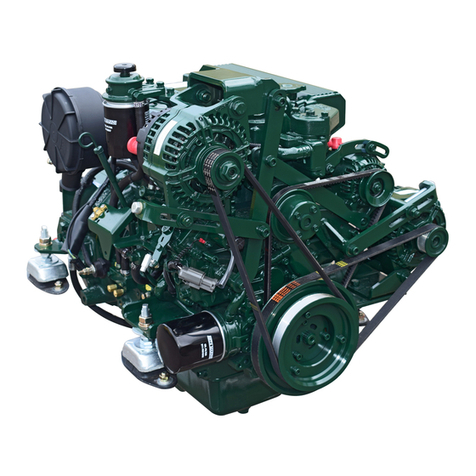
Beta Marine
Beta Marine Beta 50 User manual
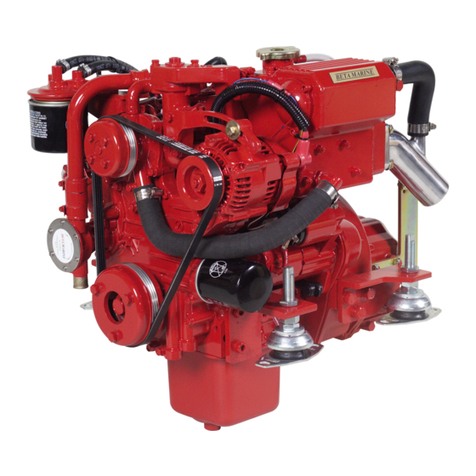
Beta Marine
Beta Marine Beta 14 User manual

Beta Marine
Beta Marine BV1305 User manual

Beta Marine
Beta Marine Beta 14 User manual

Beta Marine
Beta Marine Beta 43 User manual
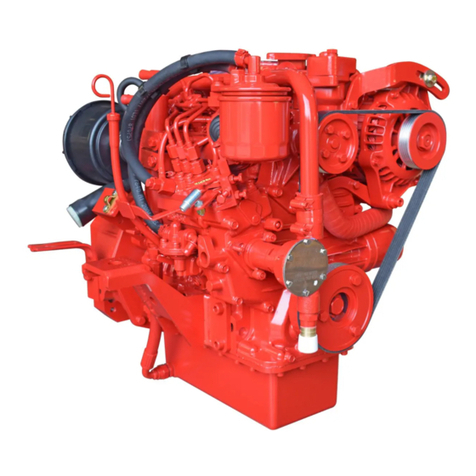
Beta Marine
Beta Marine Beta 10 User manual

Beta Marine
Beta Marine Beta 10 User manual

